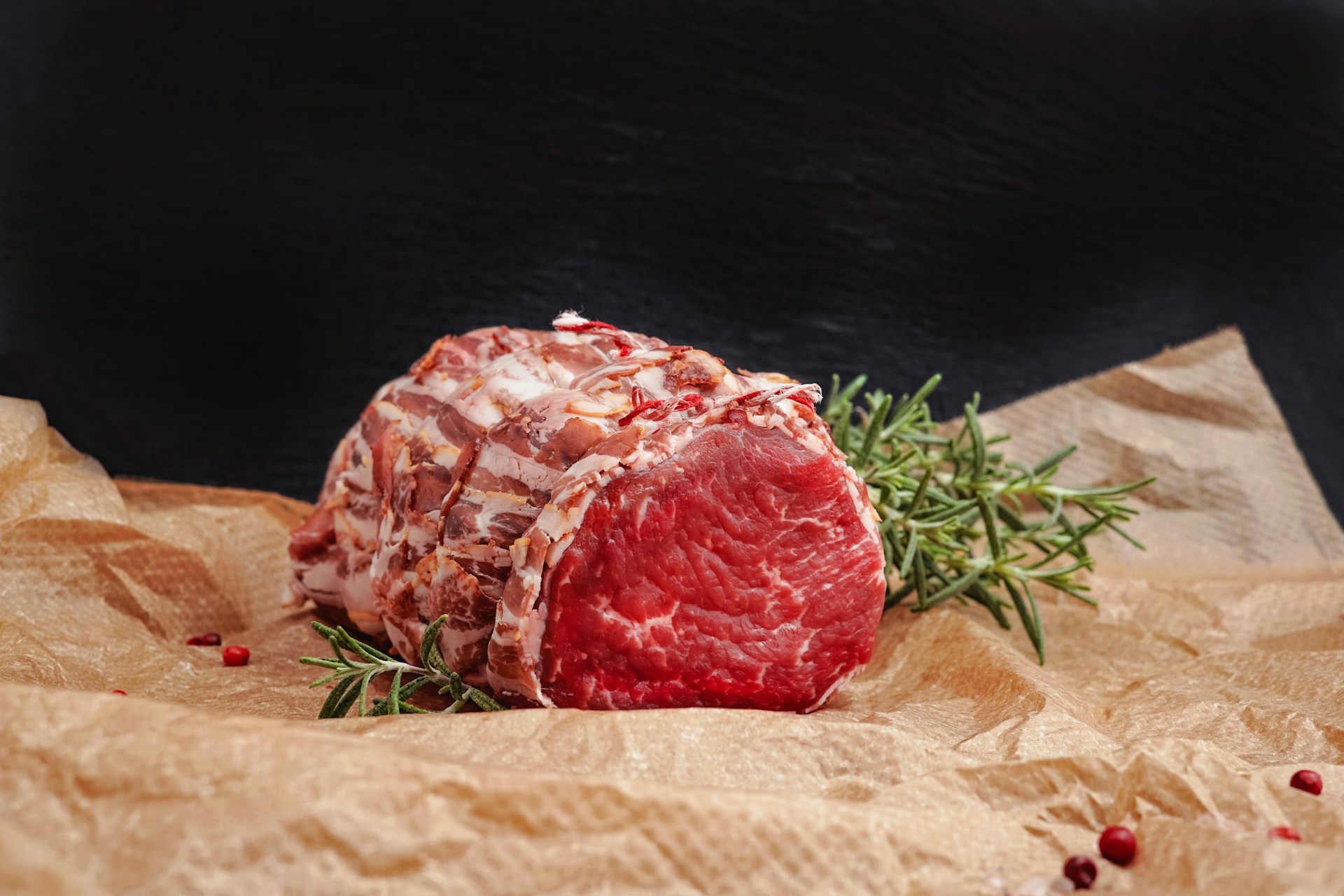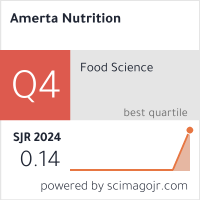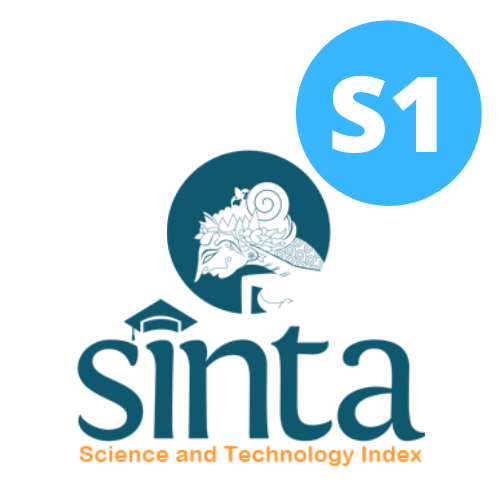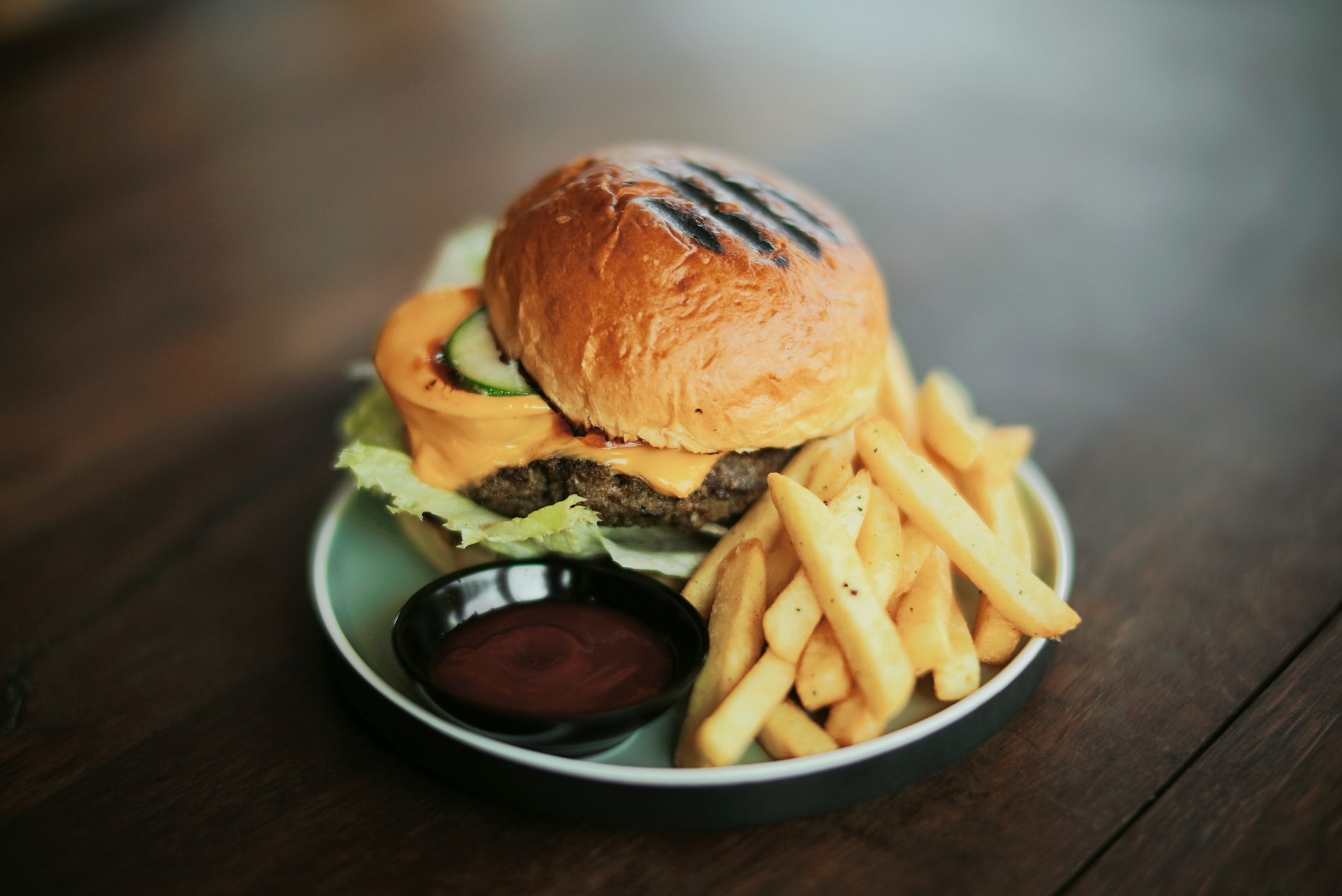Organoleptic and Textural Quality Improvement of Soybean and Glucomannan-Based Meat Analogs for Obesity Intervention Using Mushrooms and Vegetable Oil
Peningkatan Mutu Organoleptik dan Tekstur Daging Tiruan Berbasis Kedelai dan Glukomanan untuk Intervensi Obesitas Menggunakan Jamur dan Minyak Nabati

Background: Plant-based meat analogs can be an alternative food for obesity intervention because their composition can be engineered according to criteria. The similarity of fiber structure to meat muscle, texture, sensory properties, and nutritional value determines consumer acceptance. Mushrooms have low-fat, high-quality protein, fiber, and nutraceuticals, so they have the potential for meat analogs formulation. Mushrooms also have a fibrous structure that can imitate meat texture and have a savory umami taste. Adding vegetable oil to the meat analogs formula has been shown to maintain its physicochemical properties and shelf life.
Objectives: Improving organoleptic and texture quality of soy and glucomannan-based meat analog for obesity intervention.
Methods: A completely randomized experimental design study was conducted with one control and four treatments. Data collected include texture profile, water-oil holding capacity, browning index, organoleptic, and satiety index test. Data were analyzed by Analysis of Variance followed by Duncan Multiple Range Test.
Results: The use of mushrooms and vegetable oil in the formula affects (p-value<0.05) the aroma, water-oil holding capacity, and texture parameters of hardness bite, gumminess, and chewiness but does not affect (p-value>0.05) the appearance, taste, texture, aftertaste, liking, browning index, and texture parameters of cohesiveness, resilience, and springiness. Enoki mushrooms and corn oil tend to improve the organoleptic quality of meat analogs. The satiety index of meat analog with the addition of enoki mushrooms and corn oil is 110.4%.
Conclusions: Mushrooms and vegetable oils can be used in meat analog formulations to improve their organoleptic and textural qualities.
Fresán, U., Mejia, M. A., Craig, W. J., Jaceldo-Siegl, K. & Sabaté, J. Meat analogs from different protein sources: A comparison of their sustainability and nutritional content. Sustain. 11, (2019). http://dx.doi.org/10.3390/su11123231
Wi, G., Bae, J., Kim, H., Cho, Y. & Choi, M. J. Evaluation of the physicochemical and structural properties and the sensory characteristics of meat analogues prepared with various non-animal based liquid additives. Foods 9, (2020). http://dx.doi.org/10.3390/foods9040461
Dinali, M. et al. Fibrous Structure in Plant-Based Meat: High-Moisture Extrusion Factors and Sensory Attributes in Production and Storage. Food Rev. Int. 00, 1–29 (2024). https://doi.org/10.1080/87559129.2024.2309593
Kyriakopoulou, K., Keppler, J.,K.,Van Der Goot, A, .J. Functionality of Ingredients and Additives in Plant-Based Meat Analogues. Foods 10, (2021). https://doi.org/10.3390/foods10030600
Cho, Y., Bae, J. & Choi, M. J. Physicochemical Characteristics of Meat Analogs Supplemented with Vegetable Oils. Foods 12, 1–15 (2023). https://doi.org/10.3390/foods12020312
Purnawijayanti, H. A., Pujiastuti, V. I. & Wijayanti, M. I. E. Physical and Sensory Characteristics of Soybean and Glucomannan Based Meat Analogue for Obesity Intervention. Amerta Nutr. 8, 67–73 (2024). https://doi.org/10.20473/amnt.v8i1.2024.67-73
Das, A. K. et al. Edible mushrooms as functional ingredients for development of healthier and more sustainable muscle foods: A flexitarian approach. Molecules 26, 1–25 (2021). https://doi.org/10.3390/molecules26092463
Rangel-Vargas, E. et al. Edible mushrooms as a natural source of food ingredient/additive replacer. Foods 10, 1–19 (2021). https://doi.org/10.3390/foods10112687
Wang, M. & Zhao, R. A review on nutritional advantages of edible mushrooms and its industrialization development situation in protein meat analogues. J. Futur. Foods 3, 1–7 (2023). https://doi.org/10.1016/j.jfutfo.2022.09.001
Han, X. et al. Characterization of insoluble dietary fiber from Pleurotus eryngii and evaluation of its effects on obesity-preventing or relieving effects via modulation of gut microbiota. J. Futur. Foods 3, 55–66 (2023). https://doi.org/10.1016/j/jfutfo.2022.09.009
Cho, Y., Bae, J. & Choi, M. J. Physicochemical Characteristics of Meat Analogs Supplemented with Vegetable Oils. Foods 12, 1–15 (2023). https://doi.org/10.3390/foods12020312
Taghian Dinani, S., Broekema, N. L., Boom, R. & van der Goot, A. J. Investigation potential of hydrocolloids in meat analogue preparation. Food Hydrocoll. 135, 108199 (2023). https://doi.org/10.1016/j.foodhyd.2022.108199
Chau, C., F., Huang, Y. Comparison of the Chemical Composition and Physicochemical Properties of Different Fibers Prepared from the Peel of Citrus sinensis L. Cv. Liucheng. J. Agric. Food Chem. 51, (2003). https://doi.org/10.1021/jf025919b
De Angelis, D., Kaleda, A., Paqualone, A. Psysicochemical and Sensorial Evaluation of Meat Analoques Produced form dry Fractionated Pea and Oat Protein. Foods 9, 2–15 (2020). http://dx.doi.org/10.3390/foods9121754
Kaleda, A. et al. Physicochemical, textural, and sensorial properties of fibrous meat analogs from oat-pea protein blends extruded at different moistures, temperatures, and screw speeds. Futur. Foods 4, 100092 (2021). https://doi.org/10.1016/j.fufo.2021.100092
Ketnawa, S., Rawdkuen, S. Properties of Texturized Vegetable Proteins from Edible Mushrooms by Using Single-Screw Extruder. Foods 12, (2023). https://doi.org/10.3390/foods12061269
Herawati., Widiarso, B., P. Penjaminan Mutu Bahan Pangan Asal Hewan. (Media Nusa Creative, 2021).
Ledesma-Amaro, R. & Nicaud, J. M. Yarrowia lipolytica as a biotechnological chassis to produce usual and unusual fatty acids. Prog. Lipid Res. 61, 40–50 (2016). http://dx.doi.org/10.1016/j.plipres.2015.12.001
Magdalena Skotnicka, Aleksandra Mazurek, Kaja Karwowska and Marcin Folwarski. Satiety of Edible Insect-Based Food Products as a Component of Body Weight Control. Nutrients 14: 21-47, (2022). https://doi.org/10.3390/nu14102147
Lucy Chambers, Keri McCrickerd and Martin R. Yeomans. Optimising foods for satiety. Trends in Food Science and Technology 41: 149-160, (2015). http://dx.doi.org/10.1016/j.tifs.2014.10.007
Copyright (c) 2025 Amerta Nutrition

This work is licensed under a Creative Commons Attribution-ShareAlike 4.0 International License.
AMERTA NUTR by Unair is licensed under a Creative Commons Attribution-ShareAlike 4.0 International License.
1. The journal allows the author to hold the copyright of the article without restrictions.
2. The journal allows the author(s) to retain publishing rights without restrictions
3. The legal formal aspect of journal publication accessibility refers to Creative Commons Attribution Share-Alike (CC BY-SA).
4. The Creative Commons Attribution Share-Alike (CC BY-SA) license allows re-distribution and re-use of a licensed work on the conditions that the creator is appropriately credited and that any derivative work is made available under "the same, similar or a compatible license”. Other than the conditions mentioned above, the editorial board is not responsible for copyright violation.












































